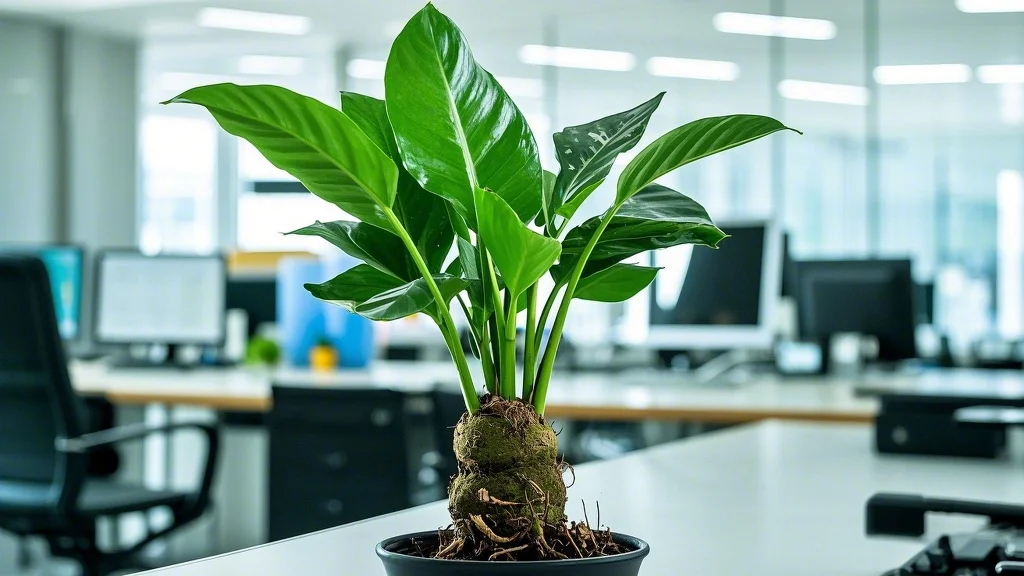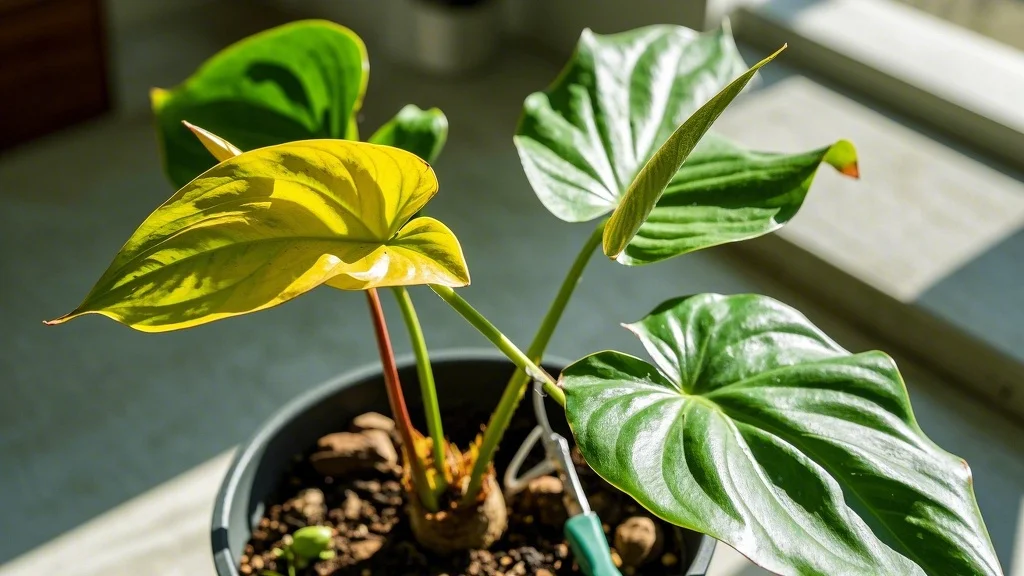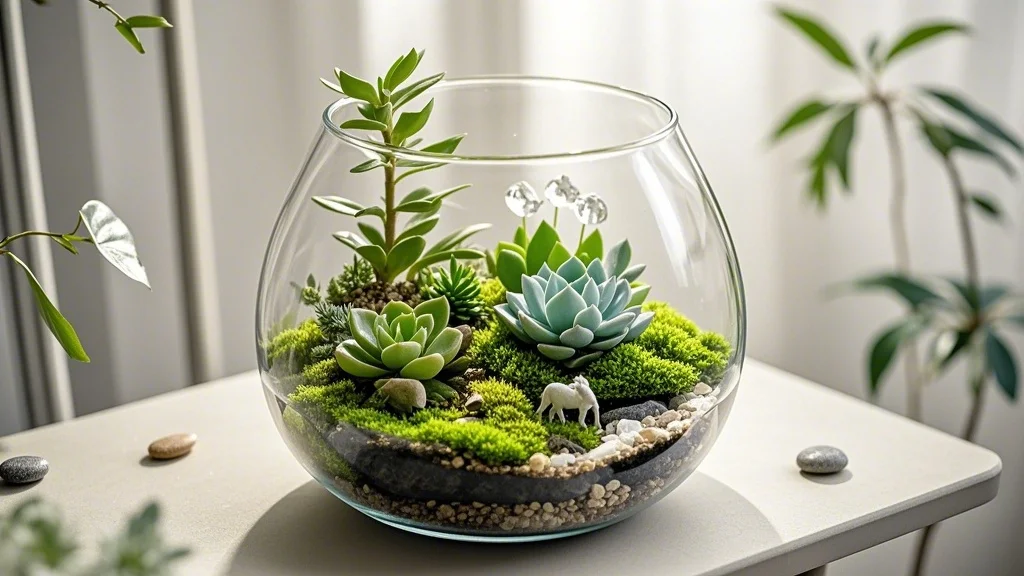The ZZ plant (Zamioculcas zamiifolia) is an excellent choice for office environments, known for its resilience and ability to thrive in low-light conditions. This guide will explore why ZZ plants are perfect for offices and provide comprehensive care instructions.
Difficulty Level: Easy
Contents
Basic Information
- Scientific Name: Zamioculcas zamiifolia
- Origin: Eastern Africa
- Toxicity: Mildly toxic if ingested; can cause skin irritation
- Height: 2-3 feet (60-90 cm)
- Light Requirements: Low to moderate indirect light
- Water Needs: Low
Quick Care Guide
- Light: Tolerates low light; thrives in moderate indirect light
- Water: Allow soil to dry between waterings; water sparingly
- Humidity: Adapts to average office humidity
- Temperature: 60-75°F (15-24°C)
- Soil: Well-draining potting mix
- Fertilizer: Feed monthly during growing season with balanced liquid fertilizer
Detailed Care Instructions

Light Requirements
ZZ plants are renowned for their ability to tolerate low-light conditions, making them ideal for office spaces with limited natural light. They can thrive under fluorescent lighting, which is common in many office environments.
- Optimal Light: While ZZ plants can survive in low light, they grow best in moderate, indirect light. Place them near a north-facing window or a few feet away from an east or west-facing window.
- Fluorescent Lighting: ZZ plants do well under standard office fluorescent lights. Ensure the plant is within 3-6 feet of the light source for optimal growth.
- Avoid Direct Sunlight: Direct sunlight can scorch the leaves. If placed near a sunny window, use a sheer curtain to filter the light.
Watering Guide
One of the ZZ plant’s most attractive features for office environments is its drought-tolerant nature. Overwatering is the most common issue with these plants, so it’s essential to water sparingly.
- Frequency: Water only when the top 2-3 inches of soil are completely dry. This may be as infrequent as once every 2-3 weeks in low-light conditions.
- Technique: When watering, thoroughly soak the soil until water drains from the bottom of the pot. Discard any water that collects in the saucer.
- Signs of Overwatering: Yellowing leaves or stem rot indicate overwatering. If this occurs, reduce watering frequency and ensure the pot has proper drainage.
- Winter Care: Reduce watering even further during winter months when growth slows.
Common Problems and Solutions

1. Yellowing Leaves
- Cause: Usually due to overwatering or poor drainage.
- Solution: Reduce watering frequency and ensure the pot has adequate drainage holes. Check that the soil isn’t waterlogged and consider repotting if necessary.
2. Brown Leaf Tips
- Cause: Often caused by low humidity or fluoride in tap water.
- Solution: Increase humidity by placing a pebble tray filled with water near the plant. Use filtered or distilled water for watering.
3. Slow Growth or No New Growth
- Cause: Insufficient light or nutrients.
- Solution: Move the plant to a brighter location (but still out of direct sunlight) and start a regular fertilizing schedule during the growing season.
Buying Guide and Essential Supplies
When selecting a ZZ plant for your office, look for the following:
- Healthy, glossy leaves without spots or discoloration
- Firm stems without any signs of rot
- A pot with adequate drainage holes
Essential supplies for ZZ plant care:
- Well-draining potting mix: A mix designed for succulents or indoor plants works well.
- Pot with drainage holes: Choose a pot 1-2 inches larger than the current one when repotting.
- Watering can or bottle: For precise watering control.
- Liquid fertilizer: A balanced, water-soluble fertilizer for monthly feeding during the growing season.
- Pruning shears: For removing any dead or yellowing leaves.
Frequently Asked Questions (FAQ)
1. Are ZZ plants safe for offices with pets?
While ZZ plants are mildly toxic if ingested, they’re generally safe for office environments. However, it’s best to keep them out of reach of any office pets and wash hands after handling the plant.
2. How often should I repot my office ZZ plant?
ZZ plants are slow-growing and don’t mind being slightly root-bound. Repot every 2-3 years or when the plant outgrows its current container.
3. Can ZZ plants improve air quality in the office?
Like many indoor plants, ZZ plants can help improve air quality by removing small amounts of indoor air pollutants. However, their impact is minimal compared to proper ventilation systems.
4. Do ZZ plants need to be pruned?
ZZ plants rarely need pruning. Remove any yellowing or dead leaves to maintain appearance and plant health.
5. Can ZZ plants survive a weekend without water?
Absolutely! ZZ plants are drought-tolerant and can easily survive a weekend or even a week-long vacation without watering.
Conclusion
ZZ plants are an excellent choice for office spaces due to their low maintenance requirements and ability to thrive in various light conditions. Their glossy, dark green leaves add a touch of nature to any workspace, potentially boosting mood and productivity. By following the care instructions outlined in this guide, you can ensure your office ZZ plant remains healthy and vibrant for years to come, enhancing your work environment with minimal effort.








